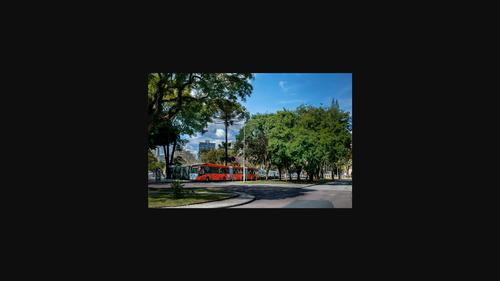The legacy of Jaime Lerner and Curitiba, Brazil
IF 5.4
3区 工程技术
Q2 ENERGY & FUELS
引用次数: 0
Abstract
More than 30 years have passed since Curitiba, Brazil, and Jaime Lerner, the three‐time mayor of the city, first became famous for the innovations that were implemented there, many environmental in focus. The most famous of these was the creation of a highly used and efficient public transportation system based on buses. Many have sought to emulate elements of the innovation put in place in that city. In recent years, however, both the country and the city have been beset by political scandals, economic malaise, and social problems, which have adversely affected many of these innovations. As a result, some question whether Curitiba remains relevant today as a model for the rest of the world. This perspective will examine the legacy of Lerner and Curitiba. Focusing on the public transportation system, it will make the case that the innovative principles underlying the original design of the public transportation system remain as relevant today for Curitiba and cities globally as they were then. These principles are design of an efficient and hierarchical public transportation system that takes its users from their first mile of commute to their last mile; construction of an urban infrastructure that supports and enhances use of public transportation; establishment of an effective public–private partnership where the private sector owns, operates and upgrades the vehicles while the public sector plans and oversees the system; and creation of a metropolitan governance strategy when the needs for public transportation go beyond city borders.

Jaime Lerner和巴西库里提巴的遗产
30多年过去了,巴西的库里蒂巴市(Curitiba)和曾三任该市市长的杰米·勒纳(Jaime Lerner)首次因在那里实施的创新而闻名,其中许多创新都是关注环境的。其中最著名的是建立了一个以公共汽车为基础的高度使用和高效的公共交通系统。许多人都试图效仿这座城市的创新元素。然而,近年来,这个国家和这个城市都被政治丑闻、经济萎靡和社会问题所困扰,这些问题对许多这些创新产生了不利影响。因此,一些人质疑库里蒂巴今天是否仍然是世界其他地区的典范。这一视角将审视勒纳和库里蒂巴的遗产。以公共交通系统为重点,它将证明公共交通系统原始设计的创新原则在今天仍然适用于库里蒂巴和全球城市,就像他们当时一样。这些原则是设计一个高效、分层的公共交通系统,将用户从通勤的第一英里带到最后一英里;建设支持和加强公共交通使用的城市基础设施;建立有效的公私伙伴关系,由私营部门拥有、经营和升级车辆,而公营部门则负责规划和监督该系统;当对公共交通的需求超越城市边界时,制定城市治理战略。
本文章由计算机程序翻译,如有差异,请以英文原文为准。
求助全文
约1分钟内获得全文
求助全文
来源期刊

Wiley Interdisciplinary Reviews-Energy and Environment
ENERGY & FUELS-
CiteScore
11.70
自引率
3.30%
发文量
42
期刊介绍:
Wiley Interdisciplinary Reviews: Energy and Environmentis a new type of review journal covering all aspects of energy technology, security and environmental impact.
Energy is one of the most critical resources for the welfare and prosperity of society. It also causes adverse environmental and societal effects, notably climate change which is the severest global problem in the modern age. Finding satisfactory solutions to the challenges ahead will need a linking of energy technology innovations, security, energy poverty, and environmental and climate impacts. The broad scope of energy issues demands collaboration between different disciplines of science and technology, and strong interaction between engineering, physical and life scientists, economists, sociologists and policy-makers.
 求助内容:
求助内容: 应助结果提醒方式:
应助结果提醒方式:


